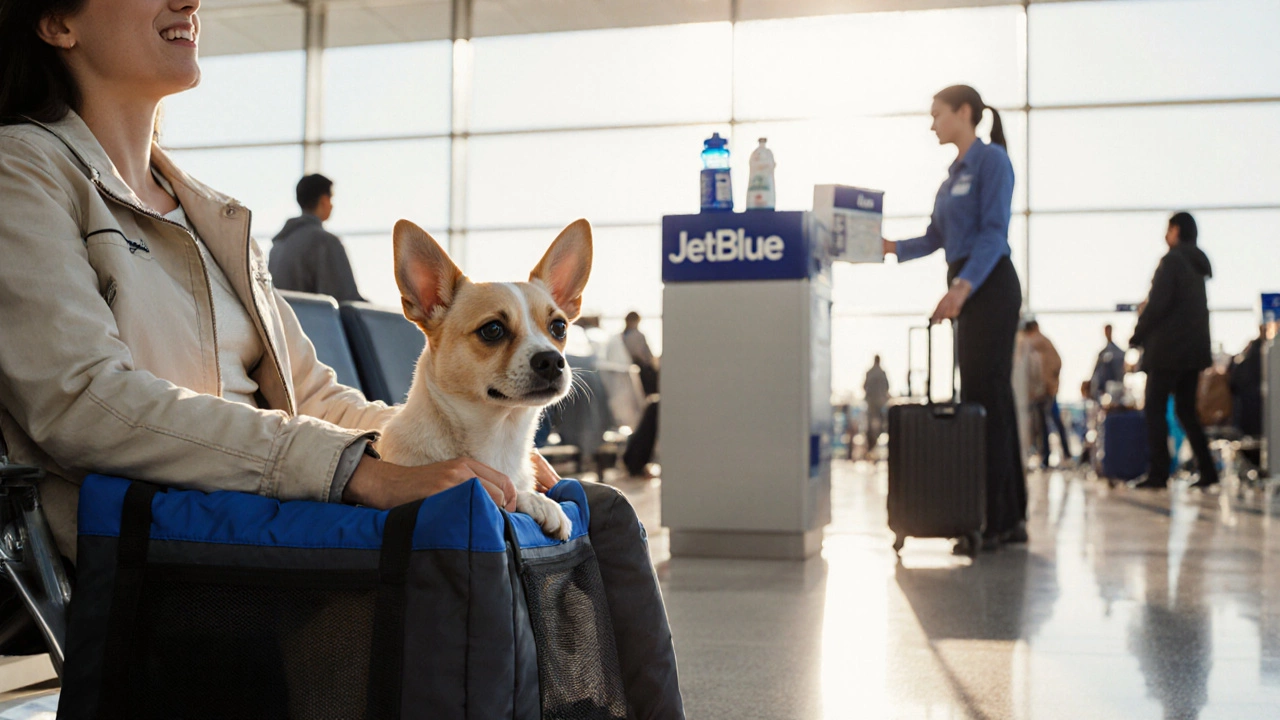Dog-Friendly Airline: What You Need to Know
When planning a trip with your pup, understanding a dog-friendly airline, an airline that permits dogs in the cabin or cargo under defined conditions. Also known as pet‑approved carrier airline, it encompasses clear airline pet policies, the set of rules airlines publish about size limits, fees, and health paperwork. These policies require owners to match carrier dimensions to seat space, which directly influences the feasibility of cabin travel with dogs, bringing a dog inside the passenger cabin under the seat or in a dedicated compartment. Knowing this web of rules saves you time at the airport and keeps your dog comfortable throughout the flight.
Why Airline Pet Policies Matter for Cabin and Cargo Options
Most airlines split pet travel into two buckets: cabin and cargo. The dog cargo flight, shipping a dog in the aircraft’s cargo hold, typically used for larger breeds or when cabin space is unavailable follows stricter temperature controls and handling procedures. Studies from pet‑airline specialists show that a well‑written policy lowers stress by 30% because owners know exactly what to expect. Meanwhile, in‑flight dog toilet, a practical solution for managing a dog’s bathroom needs on long journeys is often overlooked, yet airlines that provide guidance on portable pee pads or pre‑flight feeding schedules help reduce accidents and anxiety. By comparing how each policy treats cabin space versus cargo hold, you can decide which route matches your dog’s size, temperament, and health needs.
Size limits are the first hurdle most owners hit. A 30‑lb dog, for example, may fit under the seat on some carriers but not on others that cap at 20 lb. The carrier’s dimensions—usually around 18×12×10 inches for cabin travel—must align with the airline’s seat width. When the dog exceeds cabin limits, the cargo option becomes the only safe choice, provided the airline monitors temperature and offers a pressurized environment. Knowing the exact numbers lets you pick a flight where your dog can sit next to you, rather than being locked away in a distant hold.
Health documentation is another common pain point. Most airlines demand a recent health certificate, up‑to‑date vaccinations, and sometimes a microchip scan. Those requirements tie back to the airline’s pet policy and affect both cabin and cargo scenarios. Missing paperwork can lead to last‑minute boarding denials, which cost both time and money. A quick check of the airline’s website—often hidden under “traveling with pets” or “special baggage”—will list the exact forms you need, the acceptable time frame (usually within 10 days of travel), and any extra fees. Keeping these documents organized in a folder you carry to the airport eliminates surprise stalls at the check‑in desk.
When the flight is long, the in‑flight dog toilet becomes a real concern. Proactive owners schedule a bathroom break before heading to the gate, limit water intake an hour prior, and bring absorbent pads that comply with airline safety standards. Some airlines even allow a small disposable litter box in the cabin if the carrier fits. Knowing the airline’s stance on in‑flight relief helps you pack the right accessories and plan a feeding schedule that reduces the need for emergency potty stops.
These insights set the stage for the articles you’ll find below. We’ve gathered practical tips on fitting a 30‑lb dog under a seat, navigating cargo flight stress, handling long‑haul bathroom breaks, and more. Whether you’re a first‑time flyer or a seasoned pet traveler, the collection offers clear steps to make your next trip with your dog smoother and safer.
Posted By Bryndle Redding On 19 Oct 2025 Comments (0)
Most Dog‑Friendly Airline: Best Pet Travel Options 2025
Discover the most dog‑friendly airlines in 2025, compare fees, policies, and services, and get a step‑by‑step checklist for hassle‑free pet travel.
READ MORE